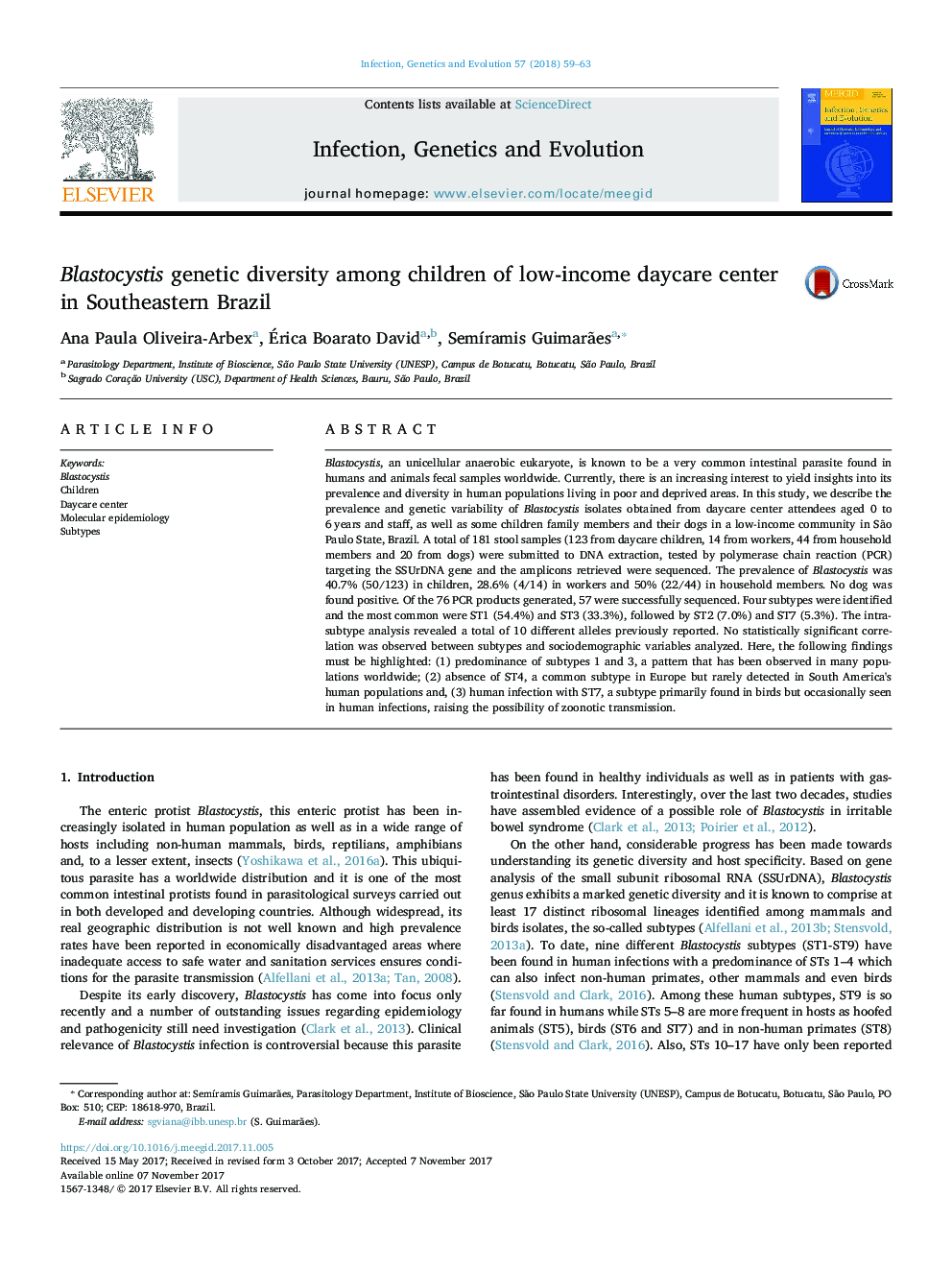| کد مقاله | کد نشریه | سال انتشار | مقاله انگلیسی | نسخه تمام متن |
|---|---|---|---|---|
| 8647016 | 1570146 | 2018 | 5 صفحه PDF | دانلود رایگان |
عنوان انگلیسی مقاله ISI
Blastocystis genetic diversity among children of low-income daycare center in Southeastern Brazil
ترجمه فارسی عنوان
تنوع ژنتیکی بلستوسیتی در میان کودکان کم درآمد مرکز نگهداری روزانه در جنوب شرقی برزیل
دانلود مقاله + سفارش ترجمه
دانلود مقاله ISI انگلیسی
رایگان برای ایرانیان
کلمات کلیدی
بلستوسیستیس، فرزندان، مرکز مراقبت روزانه، اپیدمیولوژی مولکولی، زیرمجموعه
موضوعات مرتبط
علوم زیستی و بیوفناوری
علوم کشاورزی و بیولوژیک
بوم شناسی، تکامل، رفتار و سامانه شناسی
چکیده انگلیسی
Blastocystis, an unicellular anaerobic eukaryote, is known to be a very common intestinal parasite found in humans and animals fecal samples worldwide. Currently, there is an increasing interest to yield insights into its prevalence and diversity in human populations living in poor and deprived areas. In this study, we describe the prevalence and genetic variability of Blastocystis isolates obtained from daycare center attendees aged 0 to 6 years and staff, as well as some children family members and their dogs in a low-income community in São Paulo State, Brazil. A total of 181 stool samples (123 from daycare children, 14 from workers, 44 from household members and 20 from dogs) were submitted to DNA extraction, tested by polymerase chain reaction (PCR) targeting the SSUrDNA gene and the amplicons retrieved were sequenced. The prevalence of Blastocystis was 40.7% (50/123) in children, 28.6% (4/14) in workers and 50% (22/44) in household members. No dog was found positive. Of the 76 PCR products generated, 57 were successfully sequenced. Four subtypes were identified and the most common were ST1 (54.4%) and ST3 (33.3%), followed by ST2 (7.0%) and ST7 (5.3%). The intra-subtype analysis revealed a total of 10 different alleles previously reported. No statistically significant correlation was observed between subtypes and sociodemographic variables analyzed. Here, the following findings must be highlighted: (1) predominance of subtypes 1 and 3, a pattern that has been observed in many populations worldwide; (2) absence of ST4, a common subtype in Europe but rarely detected in South America's human populations and, (3) human infection with ST7, a subtype primarily found in birds but occasionally seen in human infections, raising the possibility of zoonotic transmission.
ناشر
Database: Elsevier - ScienceDirect (ساینس دایرکت)
Journal: Infection, Genetics and Evolution - Volume 57, January 2018, Pages 59-63
Journal: Infection, Genetics and Evolution - Volume 57, January 2018, Pages 59-63
نویسندگان
Ana Paula Oliveira-Arbex, Ãrica Boarato David, SemÃramis Guimarães,
